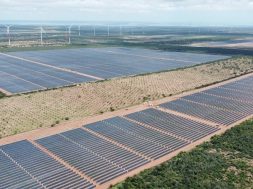
Indiais making significant strides towards meeting climate commitments and is on course to surpass its Nationally Determined Contribution (NDC) targets before 2030, said an independent study by the Council on Energy, EnvironmentAnd Water(CEEW).
Non-fossil fuel energy sources, largely due to the rapid growth of solar energy, will garner a share of at least 48 per cent in India’s Electricitygeneration capacity by 2030, according to the study, ‘Sustainable development, uncertainties, and India’s climate policy: Pathways towards Nationally Determined Contribution and mid-century strategy’, released on Monday.
However, Indiawill need to bear the cost of integration which will increase as the share of solar and wind increases.
Also, the Energy Sector Carbon Dioxide Emissions Intensityof GDP will decline by at least 48 per cent between 2005 and 2030, on the back of significant developments in Energy Efficiencyof end-use sectors such as residential, Transportationand industrial sectors.
But, if the efficiency improvement in these sectors occurs at a lower rate, Energy Demandin the economy increases at a faster rate, and share of Electricityin meeting industrial Energy Demandremains stagnant, then the emissions intensity of GDP will be higher by 11 per cent in 2030.
India’s economy and power generation sector has changed significantly since 2015.
The change has been mainly driven by a rapid ramp-up of Solar Energydeployment, substantial decline in the costs of solar and wind-based electricity, and multiple developments in the end use-sectors.
CEEW’s study identifies the cost of integrating Variable Renewable Energyinto the Electricitygrid as a key element of India’s Energy Transitionto a low-carbon economy.
The cost of integrating Variable Renewable Energyconsists of grid infrastructure costs, grid balancing costs, and utilisation effect caused due to reduced utilisation of thermal power plants.














